Two rectangular boxes shown in figures has a partition which can slide without friction along the length of the box. Initially each of the two chambers of the box has one mole of a monoatomic ideal gas (γ=5/3) at a pressure p0 volume V0and temperature T0. The chamber on the left is slowly heated by an electric heater. The walls of the box and the partitions are thermally insulated. Heat loss through the lead wires of the heater is negligible. The gas in the left chamber expands, pushing the partition until the final pressure in both chambers becomes 243P0/32. Determine
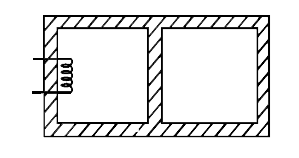
(i) the final temperature of the gas in each chamber and
(ii) the work-done by the gas in the right chamber.
T1=(207/16)T0,T2=94T0,−158P0V0
Topper's Solved these Questions
- BOOK - MOTIONCHAPTER - HEAT-2 EXERCISE - EXERCISE-4 (LEVEL-I)34videos
HEAT-2
- BOOK - MOTIONCHAPTER - HEAT-2 EXERCISE - EXERCISE-4 (LEVEL-II)30videos
HEAT-2
- BOOK - MOTIONCHAPTER - HEAT-2 EXERCISE - EXERCISE-3 (LEVEL-I)22videos
HEAT-2
- BOOK - MOTIONCHAPTER - HEAT TRANSFER & THERMAL EXPANSION EXERCISE - Exercise - 3 Section-B19videos
HEAT TRANSFER & THERMAL EXPANSION
- BOOK - MOTIONCHAPTER - HYDROSTATIC, FLUID MECHANICS & VISCOSITYEXERCISE - EXERCISE -3 (SECTION-B) PREVIOUS YEAR PROBLEM7videos
HYDROSTATIC, FLUID MECHANICS & VISCOSITY
Similar Questions
A gaseous mixture consists of 16g of helium and 16 g of oxygen. The ratio CpCv of the mixture is
03:23View SolutionA cylinder of mass 1kg is given heat of 20,000J at atmospheric pressure. If initially the temperature of cylinder is 20∘C, find
(a) final temperature of the cylinder.
(b) work done by the cylinder.
(c) change in internal energy of the cylinder
(Given that specific heat of cylinder=400Jkg−1^∘C−1, Atmospheric pressure= 105N/m2 and Density of cylinder=9000kg/m3)07:03View SolutionSuppose the pressure p and the density ρ of air are related as p/ρn=const regardless of height (n is a constant here). Find the corresponding temperature gradient.
08:46View SolutionWhich of the following is more close to a black body ?
10:05View Solution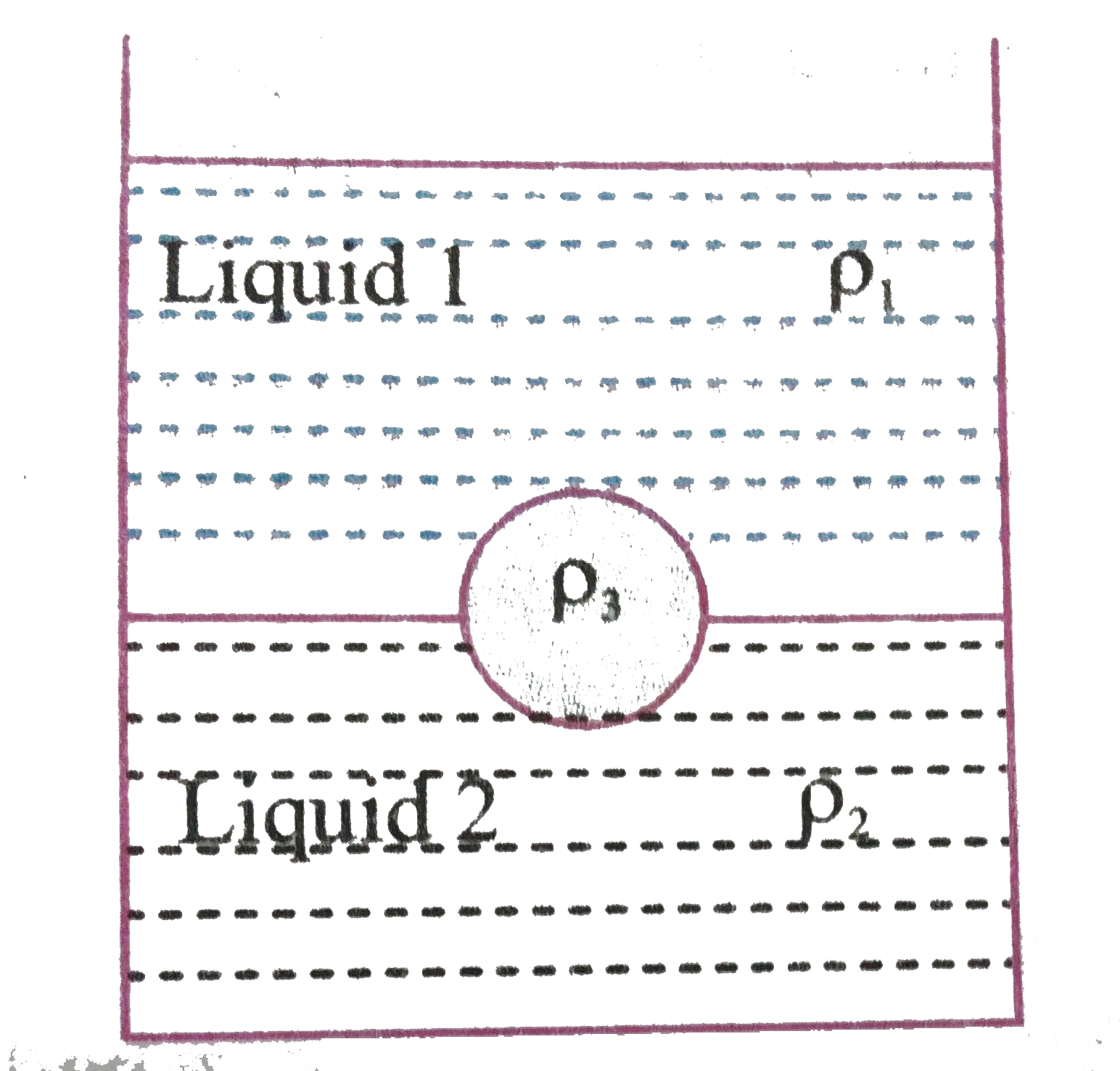
A jar filled with two non-mixing liquid 1 and 2 having densities ρ1 and ρ2 respectively. A solid ball, made of a material of density ρ3 is dropped in the jar. It come to equilibrium in the position shown in the figure. Which of the following is true for ρ1,ρ2 and ρ3?08:13View SolutionA rectangular box has a volume 48 and the sum of the length of the twelves edges of the box is 48. The largest integer that can be the length of the box is
04:43View SolutionOne mole of a monoatomic ideal gas occupies two champers of a cylinder partioned by means of a movable pision. The walls of the cylinder as well as the piston are thermal insulators. Initially equal amounts of gas fill both the chambers at (P0,V0,T0). A coil is burnt in the left chamber which absorbs heat and expands , pushing the piston to the right . The gas on the right chamber is compressed until to pressure becomes 32P0.
_S01_110_O01.png)
The final volume of left chamber is11:38View SolutionOne mole of a monoatomic ideal gas occupies two champers of a cylinder partioned by means of a movable pision. The walls of the cylinder as well as the piston are thermal insulators. Initially equal amounts of gas fill both the chambers at (P0,V0,T0). A coil is burnt in the left chamber which absorbs heat and expands , pushing the piston to the right . The gas on the right chamber is compressed until to pressure becomes 32P0.
_S01_111_O01.png)
The work done on the gas in the right chamber is05:09View SolutionA rectangualr box (shown in figure) has a movable and smooth portition which can slide along the length of the box. Both chambers contains 1 mole of monoatomic gas (γ=53) at a pressure walls of box and partition are thermally insulated. Due to heating, gas in left chamber expands until pressure in both chambers become 32P0 determine
(a) The final temperature of gas in each chamber
(b) The work done by the gas in the right chamber.
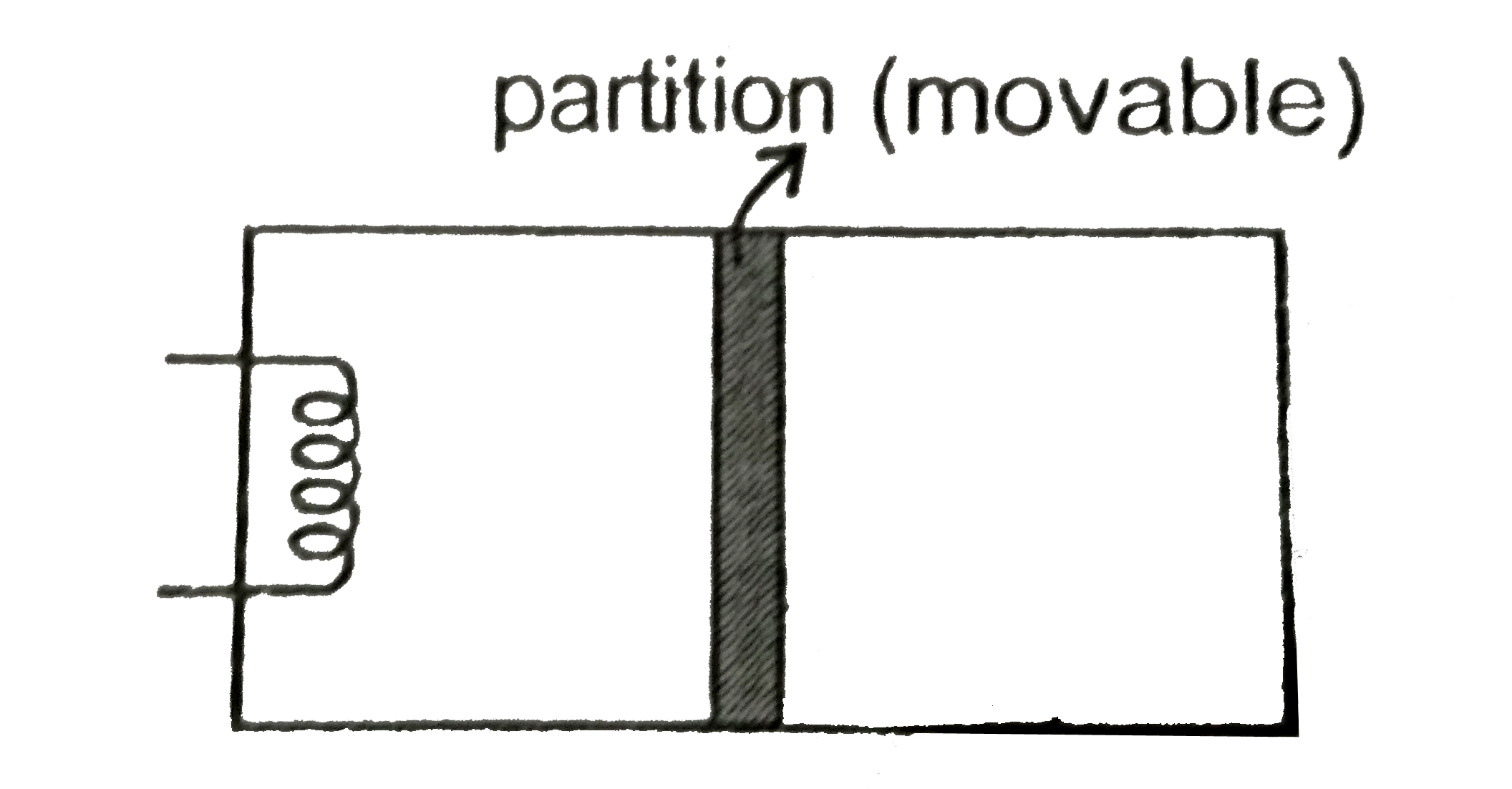 02:31View Solution
02:31View Solutionएक बॉक्स A में ताप T0 पर 1 मोल नाइट्रोजन गैस भरी है तथा दसरे बॉक्स B में ताप 73T0 पर 1 मोल हीलियम गैस भरी है | दोनों बॉक्सों को सम्पर्क में लाने पर तापीय साम्य की स्थिति में परिणामी ताप होगा :
04:36View Solutionएक बॉक्स A में ताप T0 पर 1 मोल नाइट्रोजन गैस भरी है तथा दूसरे बॉक्स B में ताप T0 पर 1 मोल हीलियम गैस भरी है | दोनों बॉक्सों को सम्पर्क में लाने पर तापीय साम्य की स्थिति में परिणामी ताप होगा :
06:40View Solutionएक आयताकार ऊष्मारोधी बक्से में ऊष्मारोधी विभाजक को बक्से की लम्बाई के अनुदिश बिना घर्षण के खिसकाया (Slide) जा सकता है | प्रारम्भ में बक्से के दोनों कोष्ठों में से प्रत्येक में 1 मोल एकपरमाणुक आदर्श गैस (γ=5/3) दाब p0, आयतन V0 तथा ताप T0 पर भरी है | बायीं कोष्ठ को विद्युत हीटर द्वारा गर्म करने पर इसमें भरी गैस फैलती है तथा जब तक कि दोनों कोष्ठों में अन्तिम दाब 243p0/32 नहीं हो जाता | ज्ञात कीजिए : (a) प्रत्येक कोष्ठ में गैस का अन्तिम ताप (b) दायीं कोष्ठ में गैस पर किया गया कार्य |
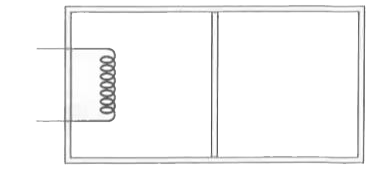 View Solution
View SolutionOn a table, two hard boxes are placed in which different ideal gas is filled. Heat T_(0) But one mole of nitrogen gas and heat in box A (7/3) T_(0) But box B contains one mole of helium gas. These boxes are kept in thermal contact with each other, the final heat of heat between them T_(f) Up to then T_(f) Value of T_(0) As will be
03:03View SolutionConsider a blackbody radiation in a cubical box at absolute temperature T. If the length of each side of the box is doubled and the temperature of the walls of the box and that of the radiation is halved, then the total energy
02:23View SolutionA box with rigid instating walls is divided into two parts by a partition. An ideal gas occupies half the box and other half is completely evacuated. The partition is suddenly removed. Will there be any temperature change in the gas?
04:12View SolutionThe rectangular box shown in Fig has partition which can slide without friction along the length of the box. Initially each of the two chambers of the box has one mole of a mono-atomic ideal gas (λ=5/3) at a pressure P0, volume V0 and temperature T0. The chamber on the left is slowly heated by an electric heater. The walls of the box and the lead wires of the heater is negligible. The gas in the left chamber expands pushing the partition until the final pressure in both chambers becomes 243P0/32. Determine (i) the final temperature of the gas in each chamber and (ii) the work done by the gas in the right chamber.
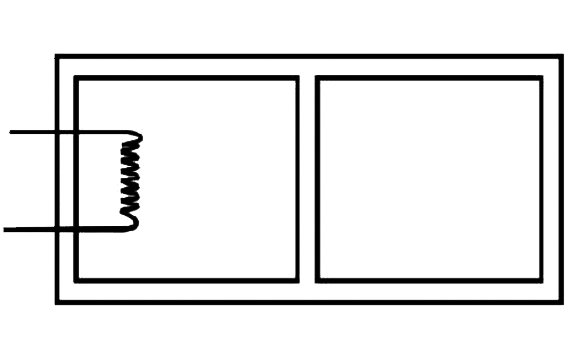 03:08View Solution
03:08View Solution

